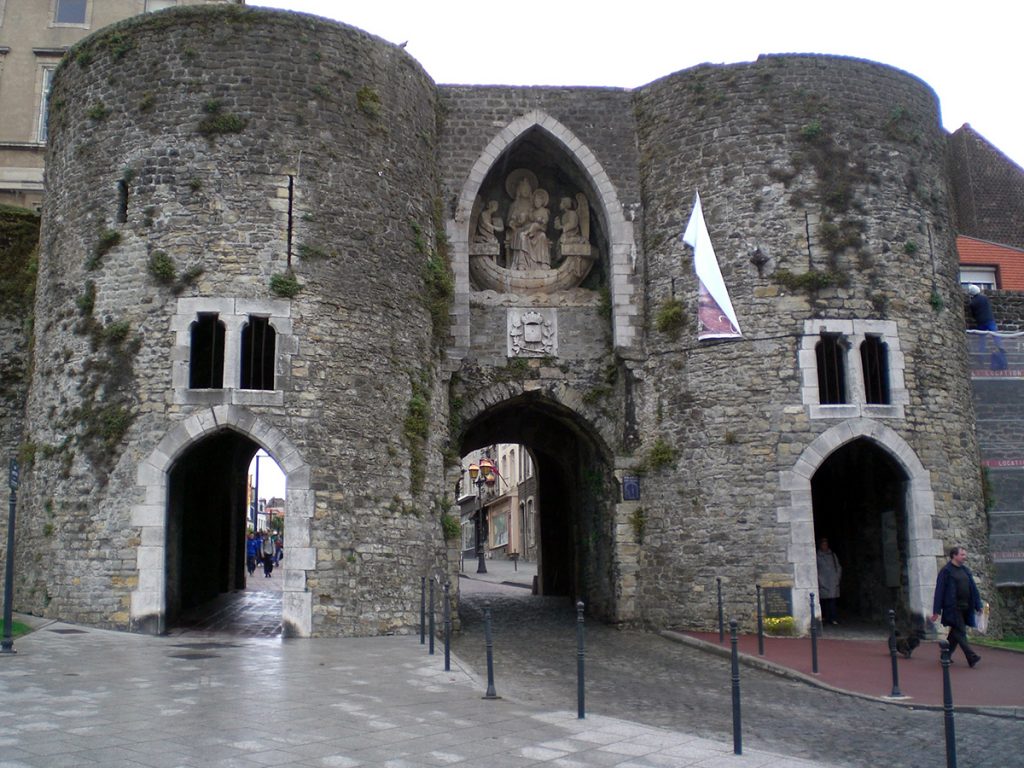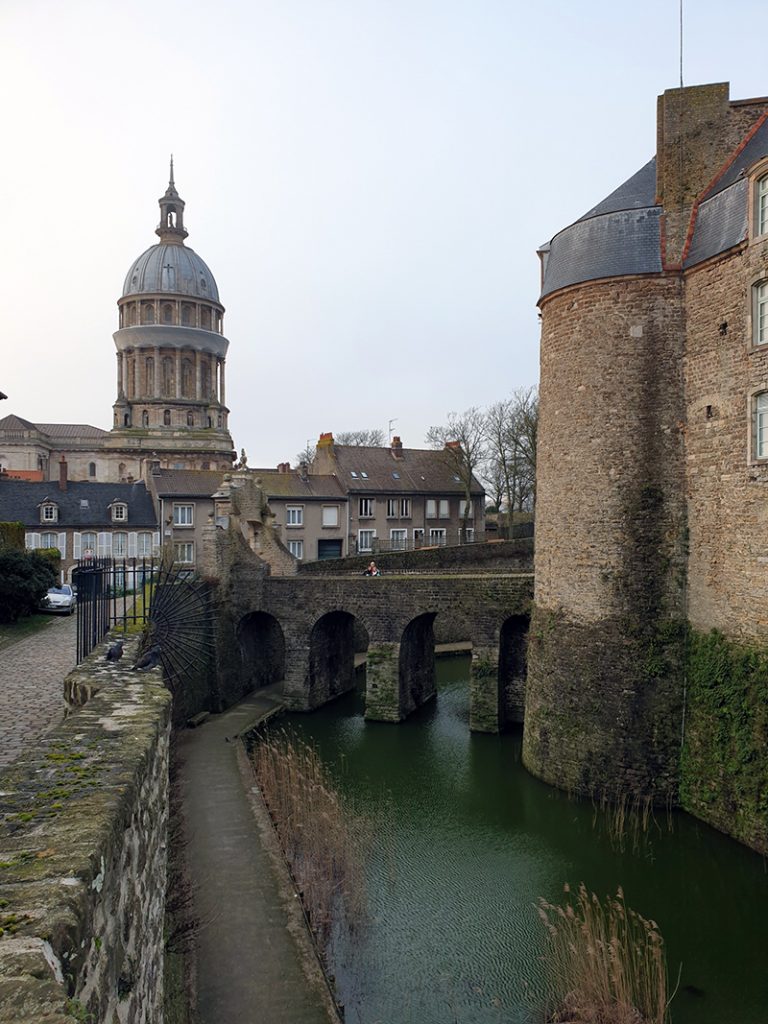Lorraine Worsely-Carter discovers the hidden heritage of France’s famous booze-run destination Boulogne -sur-Mer
When I have mentioned to friends and colleagues that we were about to spend a weekend in Boulogne -sur-Mer, in Northern France, I received one of two replies, “Oh yes the booze run!” or “Agh! Brings back memories of the school trip!”

For my part, however I am sticking with Charles Dicken’s view of Boulogne -sur- Mer: “It is the most elegant, the most colourful and the best I know…. its promenade on ramparts which surround the upper town is charming. Walks outside are delicious. This is the best mix of city and countryside, with the sea air moreover, I know!”

It is well known that Dickens was a fan of France. He once signed a letter, “Charles Dickens, Francais naturalise, et Citoyen de Paris.” I might just pen this on my email signature! The famous author lived in Boulogne for three years with his family and his time in the town is commemorated with a street which bears his name “Rue Charles Dickens.” Should I have had more time I should have loved to have met with members of the active branch of the Dickens Fellowship Organisation.
Our weekend was a gift from our youngest daughter and our son-in-law. We four arrived via the Eurotunnel from Kent – a journey of some 45 minutes. We headed to Wissant – known as ‘the last village on the coast’. The whole stretch of coast is known as ‘Côte d’Opale’ – the Opal Coast.

We parked in Place de Verdun in the heart of Wissant and we took a bracing stroll along the beach, miles of white sand, bombarded by the rolling waves of the English Channel. As I surveyed this wild and windy coastline, I imagined what this area would look like in the summer months, when the beach would be packed and how, decades ago, these beaches would have been packed with armed forces. On the roads around the area it is hard not to spot the War cemeteries, with neat row after row of white head stones marking the lives given and lost.
Our next stop was the Hotel Normandie in the Place de Verdun where some of our party sampled fish which had been caught in the traditional way and presented to perfection, washed down with a sherry glass size of vin rosé
Leaving this coastal village, we drove on to Wimereaux with its gorgeous sea front and I am told that beach huts, in colourful splendour, adorn the promenade in the summer. February was obviously not the month to leave those precious beach huts out however the colourful houses bravely facing the sea, have happily done so for years.

After another bracing beach walk, we needed cake and we were not disappointed in the gorgeous array of cakes awaiting us at Patisserie BUCAMP on Rue Carnot. We clutched our beautifully boxed precious patisserie, as we moved on, in readiness for reason for coming…. Boulogne-sur-Mer.
We were booked to stay at the IBIS Styles with its rather grand title of ‘Boulogne-sur-Mer Centre Cathedrale.’ Having stayed at IBIS Styles in other European cities I knew we would not be disappointed. The hotel has recently been refurbished with lots of quirky artistic touches, for me, this small hotel is more like a boutique hotel but at very favourable prices. As the name suggests it is directly opposite a medieval archway which leads to the old town and the beautiful basilica, La Cathédrale Notre Dame de Boulogne- sur- Mer.
Following cake and tea sustenance, it was off to explore the medieval town. Boulogne -sur-Mer, like many other towns and cities, comprises of almost two towns – a medieval and a modern – ‘sisters not twins.’ For the purposes of our trip, we were concentrating on Charles Dicken’s Boulogne-sur-Mer. The main street, Rue de Lille, just off from the Cathedral has many bars and restaurants along its cobbled way. We chose La Cave de Monsieur Guy for a glass of wine, a very cool Cave indeed, where, we read that on certain evenings, you could even take your own Motown LP’s to be played during the evening.
Sustained by the grape, we followed in Charles Dicken’s footsteps and walked along the Promenade Ramparts, where we watched the sunset, we also spied a fabulous chateau complete with a water filled moat! A rarity these days. We learned that the chateau housed the Musee Boulogne-sur-Mer and were delighted when we found that it opened on Sundays, so we planned to visit the following morning.

We returned to the main street and took an early evening meal at Restaurant La Pierre Chaude, an intimate place with check table cloths and a welcoming ‘mine host’ offering a lovely menu with typically French food, at deliciously competitive prices and an atmosphere that was warm and inviting. The restaurant was soon full of hungry locals, as everyone happily devoured their choice of steaming bowls of French onion soup with hunks of bread, moules frites, steak blu and divine chocolate puddings and crème caramel. There was an excellent Vegetarian menu for me too!
Returning to our rooms it was time to draw the curtains on the lovely view of the Cathedral – lit against the night sky and we looked forward to our morning of culture at Musee Boulogne-sur-Mer.

The fabulous 13th century chateau that holds the Musee Boulogne-sur-Mer is listed as an Historic Medieval Monument. There are three floors of exhibits and a subterranean floor, which is worth an explore just to see some of the underground architecture of this lovely building. From Egyptian collections, including an anonymous mummy, the floors are home to many statuettes, primarily used in funeral rites and religious ceremonies right across the Mediterranean. There are Alaskan artefacts, brought back by Boulogne-born ethnographer, Alphonese Pinart in 1872 together with fine and decorative arts from 15th century onwards and Northern France’s largest collections of conserved Oceania.
While the ‘strap’ line of the exhibitions on offer is ‘From one culture to another’ we were disappointed that the local history department, retracing the town’s rich heritage had been temporarily removed. This will mean a definite diary date for a future visit, at which time we will no doubt explore the modern Boulogne-Sur-Mer too.

Our adventure almost over, we made our stop at one of the huge wine emporiums and we marvelled at the reasonable prices and we happily made our purchases. As we returned to the Eurotunnel for our journey home, we felt as if we were buccaneers with smuggled alcohol, boxed in the boot of our car. Fortunately, we were assured that, if you want to import wine from France into the UK, for personal consumption, then you do not have to pay an Excise duty on the first 90 litres of wine. This fact made our ‘contraband’ look positively meagre!

Certainly, for me, this area is so much more than a ‘booze run’ and I can’t wait to explore more of the delights of the Opal Coast.
Lorraine Worsley Carter spends 48 hours in Sweden’s cool capital, Stockholm





